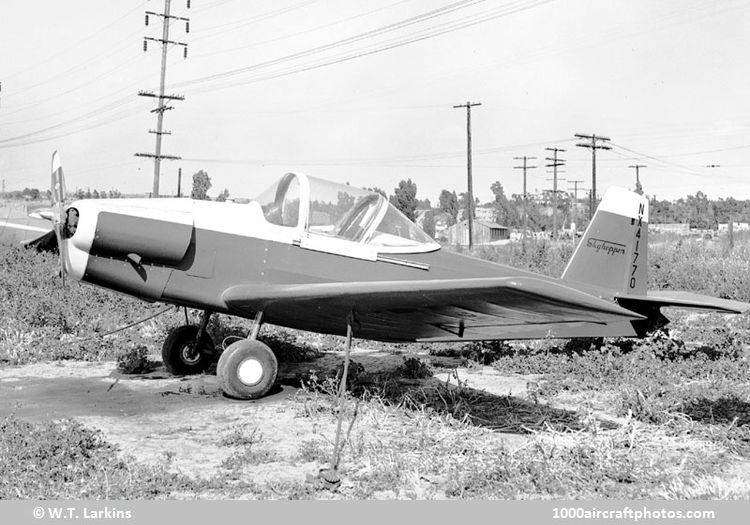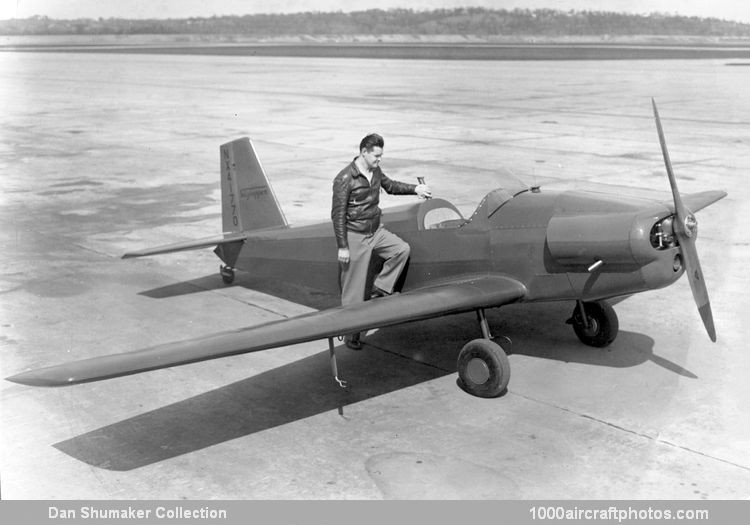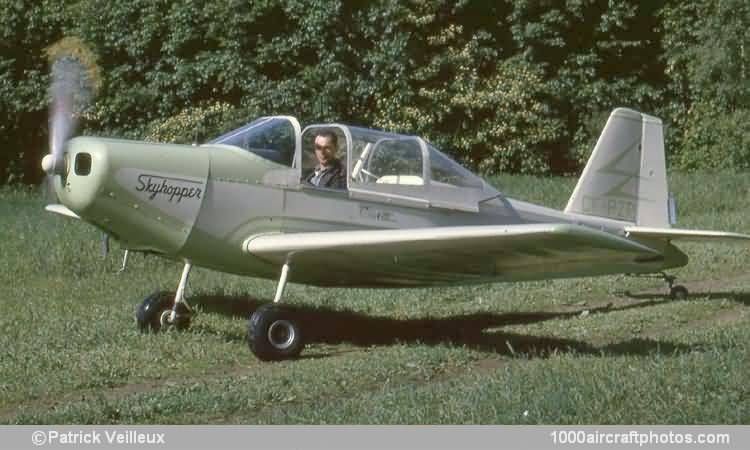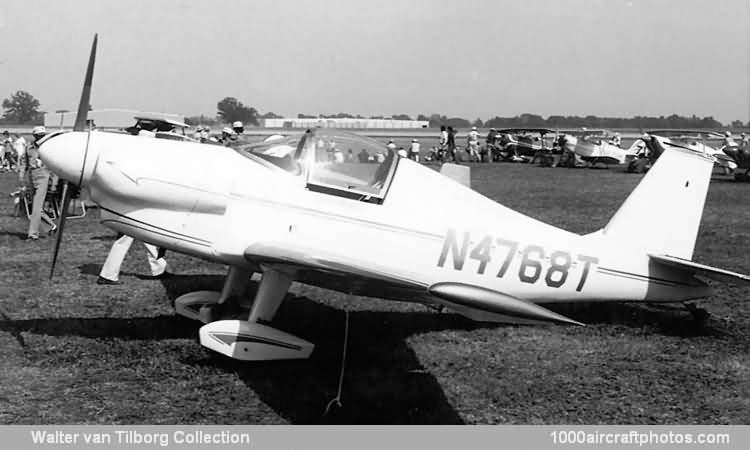W.T. LARKINS MEMORIAL COLLECTION
No. 10755. Salvay-Stark Skyhopper (NX41770 c/n 1)
Photographed at Culver City, California, USA, May 23, 1946, by W.T. Larkins
08/31/2011. Remarks by
Johan Visschedijk: "Design of the Skyhopper was begun by M.E. 'Gene' Salvay and George A. Stark (both engineers at North American Aviation, Kansas City, Kansas) in the early spring of 1944. The light aircraft was designed to comply with the CAA CAR-04 requirements of the time and Salvay constructed the single-seat prototype in the basement of his house, while Stark prepared the drawings.
Salvay-Stark Skyhopper (NX41770) (
Dan Shumaker Collection)
Registered NX41770 the prototype flew for the first time from Fairfax Airport 13 months later, March 26, 1945.
Subsequently Aviation Boosters, Inc. was formed to produce the aircraft in quantity and in the August 1945 issue of the magazine 'Flying', the Skyhopper was offered for $ 1,000. The prototype underwent considerable development and refinement, in particular the original open cockpit, within a year it gave way to an enclosed cabin with a removable sliding clear-view canopy, as pictured on top of the page.
However, by the flooding of the light aircraft market with surplus military planes within a year after Skyhopper's first flight, it became obvious that financial backing was going to be a difficult proposition. By March 1946, the business venture to produce the aircraft as a certified aircraft was dropped and Salvay and Stark split up. Salvay retained the aircraft and subsequently moved to California where he became a senior engineering executive on the AJ-1 Savage project with North American Aviation at Inglewood.
Flown initially with a 50 hp Continental engine, in 1948 the prototype was fitted with a 65 hp Continental A65 flat-four, this was changed in 1956 for an 85 hp Continental C85 and by 1959 a total of 1,000 hours of flying had been logged by the prototype. The plans were revised in 1957 and incorporated a number of changes, including a raised rear fuselage (turtle deck), and the plans were marketed through Skyhopper Airplanes, Inc.
The original single-seat version was initially marketed as the Skyhopper I (later as the Skyhopper 10) and suited for engines in the 65-125 hp range.
Salvay-Stark Skyhopper II (CF-PZR) (
Patrick Veilleux Collection)
The Skyhopper II (later Skyhopper 20), was a side-by-side two-seat variant was started by Salvay in 1959, and had a wider fuselage and cabin, and increased wingspan. The type could accept engines in the 85-125 hp range such as the Lycoming O-235, O-290, Continental C85, C90, etc.
Salvay-Stark Skyhopper (N4768T) (
Walter van Tilborg Memorial Collection)
The Skyhoppers registered varied in many details. Canopy, engine cowling, and landing gear were subject of change to the constructors liking, as seen in photo above. As early of June 1958, Dale Stark, a farmer of Angus, Minnesota, flew the first two-seater, adopted from single-seat plans, it was subsequently fitted with a tricycle landing gear.
Until marketing of the Skyhopper ended in the mid-1970s, over 600 sets of plans were sold, the number of eventually completed Skyhoppers is unknown. The pictured prototype was sold to Thomas A. Dawson of Brooksville, Florida on September 12, 1961, four years later, May 22, 1965 the registration was cancelled, the fate of the aircraft is unknown."
Wings: Cantilever low-wing monoplane. Wing section
NACA 23015-23012. Aspect ratio 6.0. All-wood two-spar structure. leading edge covered with aluminum sheet; remainder fabric covered. Statically and dynamically balanced ailerons, fabric covered. No flaps.
Fuselage: Welded steel-tube structure with fabric-covering.
Tail unit: Cantilever tail plane and fin have plywood-covered wooden structure. Statically and dynamically balanced rudder and elevators have welded tube structure, with fabric covering.
Landing gear: Non-retractable tail wheel type. Oil and spring shock-absorbers. Main wheels, size 5.00 x 5. Wheel spats optional. Steerable tail wheel.
Power plant: One 65 hp Continental A65 or 85 hp Continental C85 four-cylinder horizontally-opposed air-cooled engine driving two-blade fixed-pitch airscrew. Fuel capacity 15 gal (56.8 l).
Accommodation: Single seat or two side-by-side seats under rear-ward-sliding canopy. Small baggage space aft of seat.




